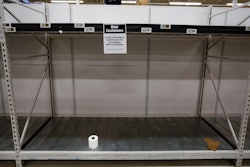
Three-fourths (74%) of respondents to Avnet’s survey said access to electronic components has been a very significant challenge, a consistent theme year-over-year, and subsequent frustrations are mounting. Most are pointing frustrations to those higher prices and delayed production schedules, with over eight in 10 saying they have gotten worse. Further, most are preparing for prices to continue increasing (29%) and lead times to continue to lengthen (26%).
“Our second annual Avnet Insights survey shows that as engineers are trying to definitively pull out of the last several years of disruption, recovery will not be linear and will instead be highly dependent on the industry one is designing for,” says Peggy Carrieres, VP of sales enablement and supplier development, Avnet. “However, the findings also underscore how these engineers are relying on industry partnerships to chart creative paths forward.”
From Avnet:
- Following more than two years of systemic disruption, respondents have a cautious outlook on the semiconductor market. Looking back at the last year, over half say the components shortage has become more severe since 2021 (59%).
- The concern lies more with the ongoing shortages than overall market conditions. Over three-quarters (79%) of respondents said component availability is of most concern to them, compared to 18% who noted market conditions.
- Nearly a quarter (23%) have begun testing and qualifying multiple parts that meet requirements early in the design process to design-in flexibility. Additionally, organizations are adjusting their supply chain strategies to build up buffer inventory (23%) and lengthen supply agreements (21%).
- Looking ahead, most are preparing for continuously increasing prices (29%) and even longer lead times (26%).
- Regionally, however, there are signs of optimism. Of respondents in Asia, more than a third rate their perspective on the market as fair, good, or excellent (36%).
- To address the market, many respondents are now focused on adding flexibility to their components from the start, creating an opening for distributor design services. While some are opting to wait (23% of respondents in EMEA said they are willing to delay product introductions to overcome shortage concerns), the most popular tactics for engineers to work around the current environment are design-based. These include using pin-to-pin replacements (25%), redesigning boards (25%), and using drop-in replacements (25%). In terms of the actual design process, 25% are designing in approved components with multiple manufacturers while 23% are testing and qualifying parts early in the design process.
- Supply chain visibility, transparency and agility have been key considerations for organizations throughout the recent disruptions. The study found many are turning their attention to building up buffer inventories (23%), while others are looking to enter long-term supply agreements (21%) and improve relationships with their distributors (19%).
“Relationships between engineers and distributors are continuously evolving and cyclical, and right now, we are seeing an increased understanding of the value that distribution, and its associated services, can add in the midst of prolonged uncertainty,” adds Carrieres. “Engineers and product designers who lean into distribution’s design and supply chain services will not only be prepared to succeed in the current environment, but also be well positioned to navigate any potential future disruptions the industry – and technology – may face.”




















